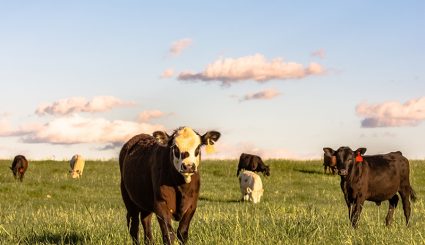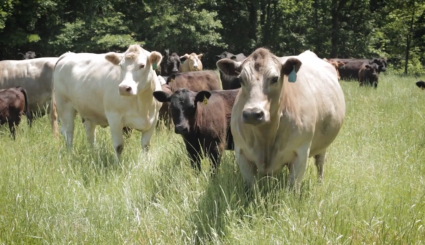Fall-applied ESN on winter forages

Ensuring winter forages have a boost of nitrogen (N) in the fall before the ground freezes while still providing the correct amount of N for crops in the spring is a tricky balance. “Farmers are always fighting the weather when fertilizing forages in the spring,” explains Ray Dowbenko, Senior Agronomist for the ESN team. That – and giving a boost to winter forages – is one of the reasons growers look to fall-apply N.
Recommendations for fertilizer applications in the fall or overwinter are regionally dependent – meaning what might be a best practice in the prairies or northern Great Plains of Canada isn’t recommended for southern states or Eastern Canada. “We’ll focus on the northern Great Plains and prairies of Western Canada,” says Dowbenko.
One of the problems with applying fertilizer to forages in the spring in Canada’s Prairie Provinces and Great Plains is that farmers need to get out while the ground is still frozen, so the weight of the tractor doesn’t create ruts in the field. They also need to get out when there’s very little or no snow on the ground. “That’s the risk with applying fertilizer in the spring,” says Dowbenko. “If a farmer waits, they may not be getting out early enough to match the N uptake needs of the crop.”
“The work we’ve done in this region in the past is on grass crops, comparing ESN to Urea. Good 4R nutrient stewardship and management – if you’re using basic N, such as urea – is to wait until late fall, preferably late October, when soil temperatures are dropping below 100C and broadcast urea on the surface.” The hope is that the ground begins to freeze soon after application when the urea is in ammonium form. If everything goes as planned, come springtime, it’s still in ammonium form and available to the crop.
“The other option has more security,” explains Dowbenko. “That’s using ESN Smart Nitrogen®, a controlled-release N fertilizer. With ESN, there is minimal to no release of N for growers applying at the beginning of October. Then, the ground will freeze and come springtime, growers will have the N in the ground – some available immediately for regrowth and some coming out later in the spring.” Because of the unique polymer coating of ESN, the N is protected all winter long.
Another option is looking at a blend of ESN and urea, or ammonium sulphate (e.g. 50:50 or 1/3 each) and applying the ESN blend later in the fall. This provides protected N, a readily available source in early spring, and the protected N (ESN) for later spring growth. ESN provides many flexible options to forage growers.
For farmers looking to give winter forages an N boost, apply earlier in the fall, for example, the second week of September. “Depending on the local environment, growers may want their winter forages to benefit from ESN. We suggest applying a little earlier, so there is some N available for fall growth and then when the ground freezes, the release will stop, and the remainder will be available in the spring,” says Dowbenko.
“Using ESN is about convenience, time management, and good agronomy,” Dowbenko says. “It fits with nutrient stewardship and provides N to forages, but remember, this only applies to ground that freezes over the winter.”
Learn more at smartnitrogen.com or contact your local retailer for ESN recommendations specific to your region.


